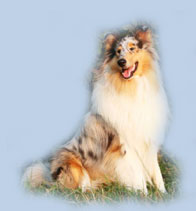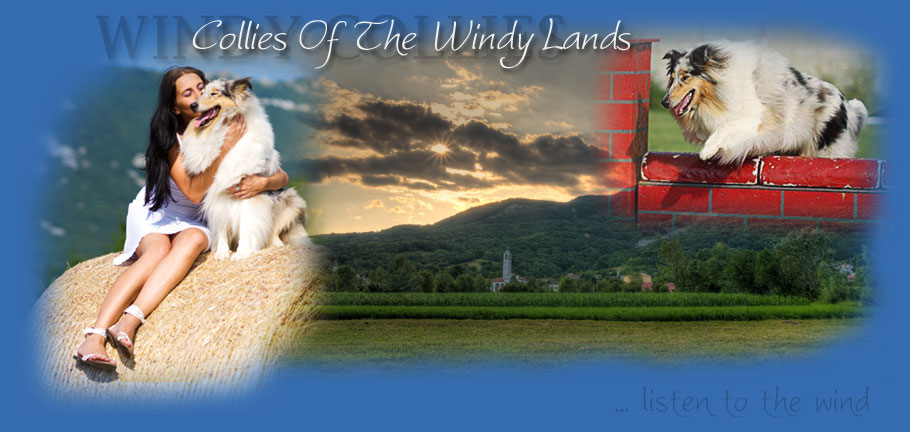|
|
|||
|
|

AGILITY Dog agility is a dog sport in which a handler directs a dog through an obstacle course in a race for both time and accuracy. Dogs run off-leash with no food or toys as incentives, and the handler can touch neither dog nor obstacles. Consequently the handler's controls are limited to voice, movement, and various body signals, requiring exceptional training of the animal and coordination of the handler. In its simplest form, an agility course consists of a set of standard obstacles, laid out by an agility judge in a design of his or her own with numbers indicating the order in which the dog must complete the obstacles. Courses are complicated enough that a dog could not complete them correctly without human direction. In competition, the handler must assess the course, decide on handling strategies, and direct the dog through the course, with precision and speed equally important. Many strategies exist to compensate for the inherent difference in human and dog speeds and the strengths and weaknesses of the various dogs and handlers. A Blue Pearl Of The Holy Mountain Competition basicsBecause each course is different, handlers are allowed a short walk-through before the competition starts. During this time, all handlers competing in a particular class can walk or run around the course without their dogs, determining how they can best position themselves and guide their dogs to get the most accurate and rapid path around the numbered obstacles. The handler tends to run a path much different from the dog's path, so the handler can sometimes spend quite a bit of time planning for what is usually a quick run. The walk-through is critical for success because the course's path takes various turns, even U-turns or 270° turns, can cross back on itself, can use the same obstacle more than once, can have two obstacles so close to each other that the dog and handler must be able to clearly discriminate which to take, and can be arranged so that the handler must work with obstacles between himself and the dog, called layering, or at a great distance from the dog.
A Blue Pearl Of The Holy Mountain Scoring of runs is based on how many faults are incurred. Penalties can include not only course faults, such as knocking down a bar in a jump, but also time faults, which are the number of seconds over the calculated standard course time (SCT), which in turn is determined based on the competition level, the complexity of the course, and other factors. A-frame Two broad ramps, hinged together and raised so that the hinged connection is above the ground, roughly forming an A shape. This obstacle has two contact zones.
Seivita Antey Dogwalk Three planks, connected at the ends. The centre plank is raised to about 1.2 m above the ground, so that the two end planks form ramps leading up to and down from the center plank. This obstacle also has contact zones.
Seivita Antey See-saw (teeter-totter) A 3 m plank pivoting on a fulcrum, much like a child's see-saw. It is constructed slightly off-balance so that the same end always returns to the ground. This obstacle also has contact zones. However, unlike the other contact obstacles, the teeter-totter does not have slats. The balance point and the weight of the plank must be such that even a tiny dog, such as a Chihuahua, can cause the high end of the teeter-totter to descend to the ground within a reasonable amount of time, specified by the sanctioning organization's rules (usually about 2 seconds). Smaller dogs get more time to run a course, and this is one reason why it can take them longer than it takes larger dogs.
Seivita Antey Tunnel A vinyl tube, 3 to 6 m long through which the dog runs. The tunnel is constructed of flexible vinyl and wire, such that it can be configured in a straight line, or in a variety of curves.
Over The Top Prokseny Collapsed Tunnel A barrel-like cylinder with a tube of fabric attached around one end. The fabric extends about 3 to 4 m and lies closed until the dog runs into the open end of the chute and pushes his way out through the fabric tube.
Over The Top Prokseny Jumpswinged single jump Two uprights supporting a horizontal bar over which the dog jumps. The height is adjusted for dogs of different heights. The uprights can be simple stanchions or can have wings of various shapes, sizes, and colors.
A Blue Pearl Of The Holy Mountain Double and triple jump Two uprights supporting two or three horizontal bars spread forward or back from each other. The double can have parallel or ascending horizontal bars; the triple always has ascending bars. The spread between the horizontal bars is sometimes adjusted based on the height of the dog.
http://www.colliedogowners.com Panel jump Instead of horizontal bars, the jump is a solid panel from the ground up to the jump height, constructed of several short panels that can be removed to adjust the height for different dog heights.
A Blue Pearl Of The Holy Mountain Broad jump (or long jump) A set of four or five slightly raised platforms that form a broad area over which the dog must jump without setting their feet on any of the platforms. The length of the jump is adjusted for the dog's height.
http://obayshelties.blogspot.com Tire jump A torus shape roughly the size of a tire, suspended in a frame. The dog must jump through the opening of the "tire"; like other jumps, the height is adjusted for dogs of different sizes. The tire is usually wrapped with tape both for visibility and to cover any openings or uneven places in which the dog could catch.
A Blue Pearl Of The Holy Mountain MiscellaneousTable (or pause table) An elevated square platform square onto which the dog must jump and pause, either sitting or in a down position, for a designated period of time which is counted out by the judge, usually about 5 seconds.
A Blue Pearl Of The Holy Mountain Weave poles Similar to a slalom, this is a series of 5 to 12 upright poles, through which the dog weaves. The dog must always enter with the first pole to his left, and must not skip poles. For many dogs, weave poles are one of the most difficult obstacles to master.
Over The Top Prokseny |
||
|
Source: http://en.wikipedia.org/wiki/Dog_agility Photos: http://sportcollie.spb.ru/
|
 |
||













